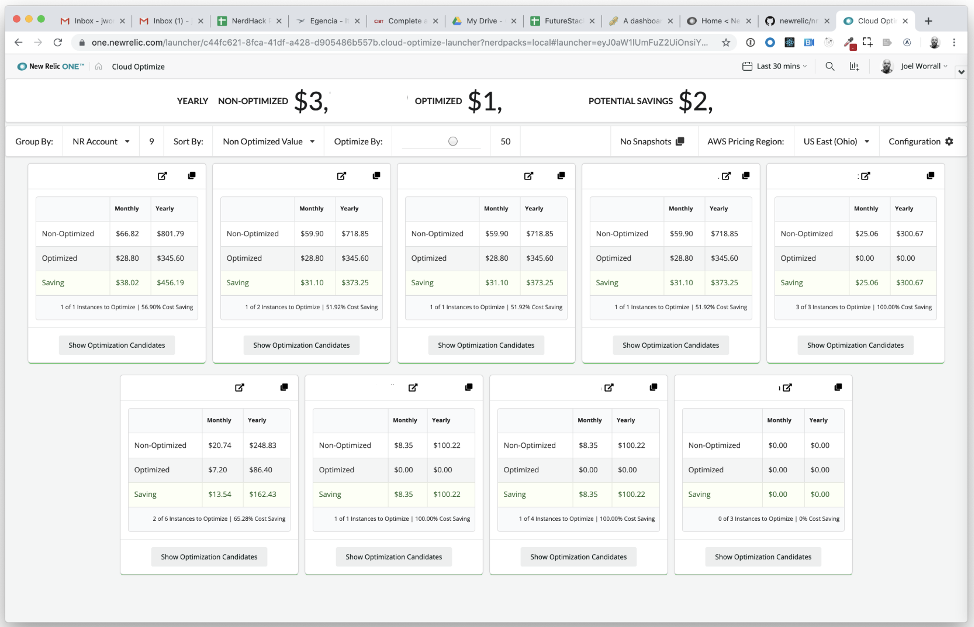There are numerous reasons why businesses are moving to the cloud, from cost reduction to agility and productivity gains, or even necessity due to rapid growth or unforeseen circumstances such as the COVID-19 pandemic. However, once businesses start to migrate, many discover that navigating financials is more complicated than they may have initially anticipated.
According to the Flexera 2020 State of the Cloud Report, the number one priority for businesses is cloud cost optimization, yet 23% of businesses are over budget on their cloud spend. This makes forecasting challenging, especially if there’s a need to move more workloads or expand cloud usage down the line. The same report also stated that 30% of that over-budget spending was wasted. The core issue here was that businesses found it difficult to identify optimization and right-sizing opportunities properly.
While there are numerous cost control tools and mechanisms in the various cloud platforms, they tend to be fit for a specific purpose. It’s also common for different business units to favor different tools, which can lead to a lack of visibility across departments. Without a holistic view, it’s nearly impossible to appropriately budget for cloud spending as you’re not able to pinpoint and identify areas of right-sizing or optimization.
One central source of data to unify business units
To make actionable decisions between your application owners and your central IT team, you need to have alignment using one central source of data. This enables you to pinpoint optimization opportunities, and receive direction as to how you can undertake right-sizing exercises without jeopardizing application performance.
New Relic enables you to do this through an application that we’ve built on top of our telemetry data called New Relic Cloud Optimize. Once you’ve installed the app, New Relic takes the collected real-time performance information from your application stack, infrastructure, EC2s, and managed services, and pulls it all into one place. Using Cloud Optimize, you can proactively identify opportunities in real time. This enables platform owners and central IT to take the output of their cloud financial management tools and complement it with telemetry data, helping team members across the organization pinpoint opportunities and perform migrations without risk.
The ability to facilitate these cross-functional discussions between app owners, central IT, operations, and business owners can help to turbocharge optimization efforts.
From a central IT or business owner standpoint, another huge benefit of Cloud Optimize is that it gives you a reduction in bill shock because it’s displayed in a real-time feed.

Driving your optimization efforts
The logic behind the Cloud Optimize app uses the telemetry data to drive your optimization efforts. The app also makes critical outbound calls to public cloud providers’ inventory APIs. These APIs provide you with real-time pricing and sizing information of all the VMs, leaving you with numerous right-sizing options.
By taking the usage data from your environment and combining it with the pricing and sizing information from your cloud provider’s inventory APIs, you’re able to locate exactly where your optimization candidates live. This is a powerful combination of telemetry data from New Relic and the actual real-time pricing data that comes from your cloud provider.
It’s also important to note that Cloud Optimize doesn’t replace your existing cloud financial management tool; it connects different views to give you cost and optimization opportunities.
We have one customer that saved seven figures across four accounts by identifying right-sizing opportunities within their Amazon Web Services environment. This customer uncovered these savings by discovering that they needed to turn off pre-production more often and scale down certain instances. Another company reduced its bill by 40% through Cloud Optimize.
Communicating back to the business
Having the data, dashboarding, and visualizations you need to take action is paramount when you work for an organization with a complex ecosystem running in the cloud. It speeds up the way you use the cloud and delivers functionality to your customers. In addition, it frees you up from admin fatigue so you can report back to the business with accurate real-time data. What was previously seen as a highly technical or complex conversation around finances now can be easily translated and help drive your business forward. Furthermore, tracking and forecasting capabilities allow you to see what’s driving demand across your organization. A recent study by 451 Research found that 56% of savings came from using cloud financial tools properly. By instilling the best practice chargeback methodology of the real-time data, you’re only going to amplify those numbers. In addition to cost, these optimization activities help to reduce business risk. By reinvesting reclaimed spend into new technologies, you’ll not only be giving your developers the best experience, but you'll also make your enterprise more resilient and protected. This is when focus truly starts to shift from cost-cutting and saving budgets to delivering a better customer experience.
Próximos passos
Get started with Cloud Optimize today. You’ll find instructions on how to install the Cloud Optimizer Nerdpack here, and the full Cloud Optimizer GitHub repository and ReadMe here.
As opiniões expressas neste blog são de responsabilidade do autor e não refletem necessariamente as opiniões da New Relic. Todas as soluções oferecidas pelo autor são específicas do ambiente e não fazem parte das soluções comerciais ou do suporte oferecido pela New Relic. Junte-se a nós exclusivamente no Explorers Hub ( discuss.newrelic.com ) para perguntas e suporte relacionados a esta postagem do blog. Este blog pode conter links para conteúdo de sites de terceiros. Ao fornecer esses links, a New Relic não adota, garante, aprova ou endossa as informações, visualizações ou produtos disponíveis em tais sites.



